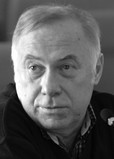Sport-specific shock wave processes in ground contacts
Фотографии:
ˑ:
Dr.Hab., Professor G.I. Popov1
PhD, Associate Professor V.S. Makaryan1
1Russian State University of Physical Education, Sports, Youth and Tourism (SCOLIPE), Moscow
The modern sport science gives a high priority to analyses of the positive and negative aspects of sport-specific shocks to control the mechanical aspects of the ground contact management process. The study analyzes the racing-sport-specific shock wave processes in ground contacts based on the treadmill tests of sport footwear. The athletes were tested with the Brule @ Kyer triple-axis accelerometers fixed on the ankles and body mass centers (BMC) to obtain the following test data: gaps between the ankle and BMC acceleration peaks; frequency rates in the shock wave propagation across the test points. The study data and analyses showed that the shock wave is impulse-shaped at low (under 5 m/s) race speeds and transverse/ longitudinal-wave-shaped at high speeds. It was found that the sport footwear and run technique designs ought to be driven by the idea of the shock waves being distributed in the body so as to ensure the shock wave center/ knot being kept within the body element need to be protected from the shocks.
Keywords: athlete, race, accelerometry, shock impulse, shock wave, shock mitigation.
References
- Davydov A.S. Nelineynye kolebatelnye yavleniya v biologii. Nelineynye volny: rasprostranenie i vzaimosvyaz [Nonlinear oscillatory phenomena in biology. Nonlinear waves: distribution and interconnection]. Moscow: Nauka publ., 1981, pp. 42-61.
- Popov G.I., Markaryan V.S. Izmenenie uprugikh kharakteristik opor i ikh vliyanie na protsessy energoobespecheniya dvizheniya [Change of elastic characteristics of supports and their effect on motion energy supply processes]. Materialyi IV Vseros. nauch.-prakt. konf. 'Informatsionnye tekhnologii, kompyuternoe modelirovanie i tekhnicheskie sredstva obucheniya i trenirovki v sfere fizicheskoy kultury i sporta] [Proc. IV nat. res,-practical conf. 'Information technologies, computer modeling and technical means of training and training in the field of physical culture and sports'] (December 9-11, 2015). Malakhovka, 2015, pp. 80-85.
- Ratov I.P., Popov G.I., Loginov A.A. et al Biomekhanicheskie tekhnologii podgotovki sportsmenov [Biomechanical technologies of athletic training]. Moscow: Fizkultura i sport publ., 2007, 120 p.
- Benno M. Nigg. Biomechanics of running shoes. Human Kinetics Publ.,1986, P. 180.
- Biomechanical diagnostic methods in athletic training. editor Milan Koh. Ljubliana, 2008,261 p.
- Eltoukhy M., Kuenze C., Andersen M.S., Oh J., Signorile J. Prediction of ground reaction forces for Parkinson's disease patients using a kinect-driven musculoskeletal gait analysis model. Med. Eng. Phys., 2017, vol. 50, pp. 75–82.
- Jung Y., Koo Y.J., Koo S. Simultaneous estimation of ground reaction force and knee contact force during walking and squatting. International Journal of Precision Engineering and Manufacturing, 2017, vol. 18, pp. 1263–1268.
- Skals S., Jung M.K., Damsgaard M., Andersen M.S. Prediction of ground reaction forces and moments during sports-related movements. Multibody Syst. Dyn., 2017, vol. 39, pp. 175–195.



 Журнал "THEORY AND PRACTICE
Журнал "THEORY AND PRACTICE